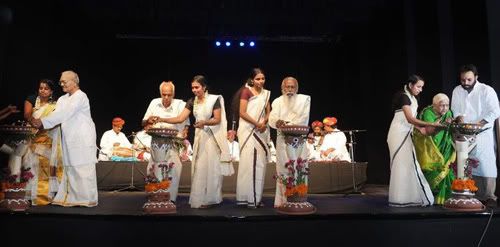The Sangh Parivar and it’s supporters time and again have been saying that their violence is in response to centuries long oppression that Hindus had to face from it’s foreign invaders. They say Hindus had to suffer because of the tolerant nature of Hindus. They further explain that the Mughal raj, British raj, Missionaries and conversion are all results of this centuries long tolerance and universal acceptance of Hinduism. This has gained quite some sympathy from both national and international audience and is often used to justify the brutally violent acts of Sangh Parivar. But this story of tolerance is nothing but a myth.
Love, hate, tolerance and intolerace are all human traits. Religion could either enhance it or destroy it. The choice is left to the human beings. Jesus Christ taught the message of love and forgiveness to his disciples. He asked them to spread these words whereas some of his disciples simply went after spreading the religion and setting up it’s institution in the name of spreading his words. The abuse of Christianity had resulted in wars and religious persecution. Jesus Christ was gone and a religious institution replaced him. This abuse continues to happen as we hear US president George Bush say “God would tell me, George, go and fight those terrorists in Afghanistan. And I did, and then God would tell me, George, go and end the tyranny in Iraq… And I did“.
Similarly, Hinduism is a beautiful philosophy. Many of the Hindu holy texts contain some beautiful thoughts and ideas. But by practice, Hinduism was not that universally accepting. The most celebrated “universal acceptance” of Hinduism is primarily based on our racist mentality that exists even now. I remember a couple of incidents – of how a northie wrote that “Madrasi chicks look ugly” which got the entire blogosphere in to a north-south divide discussion and then the most recent one from the first ever BlogCamp Kerala in 2008. One (and only) foreigner who attended the BlogCamp Kerala wrote this in his blog after the blog camp:
People were taking picture of me like I was a tourist attraction. 100 guys, 3 girls and one Guillaume, and everyone is interested in the Guillaume.
Yes, that happened in a so-called intellectual part of the society. Similarly, you go to an event, you see an african-american man and you don’t even feel like sitting beside him. But if he was white, you would definitely use any chance that you could talk to him and be a friend.
The above mentioned is one simple example of the racist mindset that we have. We love the color “White” or anything “foreign“. Hence we had warmly welcomed the Whites and other foreigners. This is one thing that resulted in the British Raj. The rulers of that time while they were treating their downtrodden within their social system (Dalits and poor people) like pigs, welcomed their White friends who later became their masters. Their own racist mindset resulted in all these. British Raj, Missionaries and such. And people call that racist mindset tolerance and universal acceptance. And that racist mentality is exactly what the problem behind conversion. Because it resulted in helping the foreigners, deep-rooting caste-system and poverty in it’s own society which later lead to missionaries and conversion.
If love, tolerance and acceptance were religious inventions, there wouldn’t have been atheists who are as humanitarians as some religious figures. The only difference is that such atheists (and I am not referring to some of those urban atheists who say “I am an atheist” for fashion) do not put any religion’s label in their work. So whenever you hear the Sangh’s doctrine about tolerance and universal acceptance, think again.

